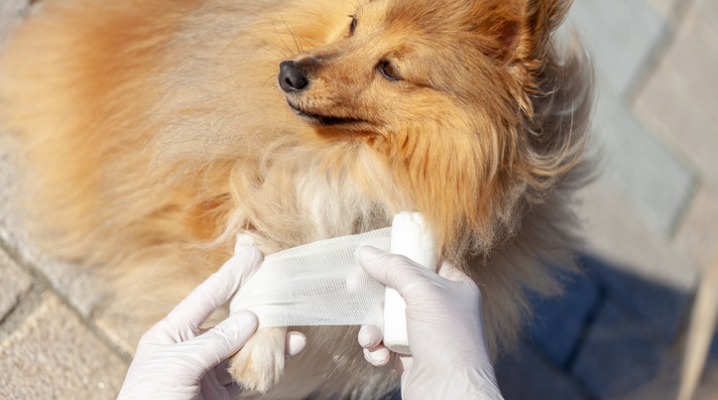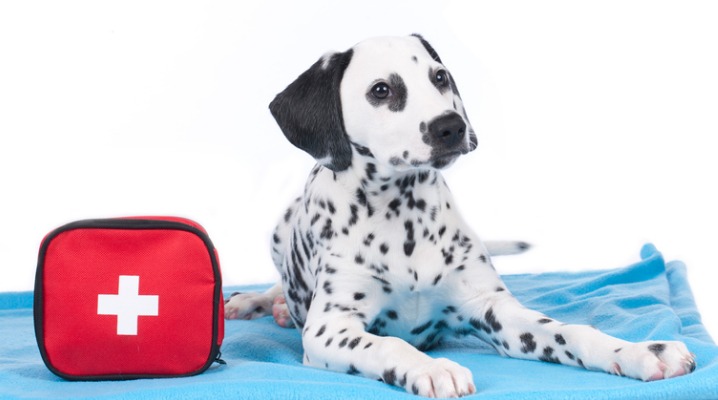
Found a Cut or Scrape on Your Pup? Treat It at Home!
If your dog is active or excitable, it is bound to get into a little bit of trouble from time to time. After running around outside, minor scrapes and cuts can occur quickly and easily. The biggest concern with scrapes and other wounds is infection, since bacteria or fungi can settle into the open skin and reproduce quickly. Therefore, if you find a cut on your pup, you’ll want to take care of it as quickly as you can.
However, not all wounds require treatment by a veterinarian. For minor scrapes, you’ll probably be able to clean and treat the wound at home, monitoring it until your dog is healed. Here’s what you should know about canine first aid.

Steps for minor wound first aid
Once you notice a minor scrape or cut on your dog’s body, you should gather the tools you’ll need to clean and dress the wound thoroughly. Most of these items can be found around the house or should be purchased to create a doggie first aid kit.
Bring your dog inside to a safe and clean area. Place it on a table or the floor so that you can work on it with good lighting. Request someone else’s help if need be to hold the dog down gently, but avoid restraining the dog too much, or else it may become scared and injure itself more.
If your dog is bleeding, use a sterile towel or cloth and apply pressure to the wound to help the blood vessels clot.
If your dog has long hair, you may want to trim the hair around the injury away with electric clippers or scissors to make it easier to work with the area. Be very careful if you do this to avoid pressing on or poking the injury.
Next, gently rinse the area with warm water. This helps remove any debris, dirt and hair that is stuck to or in the wound. It’s very important to do this so that the wound has a chance to heal starting immediately without external pathogens.
Pat the area dry, then apply an antiseptic solution to the wound, which will sterilize it and minimize the chances of infection. It’s important to use a non-stinging antiseptic solution to prevent further pain to your dog, so avoid using things like alcohol.
Finally, gently apply an antibiotic or antimicrobial ointment to the cut or scrape. You will likely need to reapply this ointment multiple times per day until the wound is healed. This is very important, since it helps the wound heal as fast as possible while keeping bacteria and fungi away from the penetrated skin.
In some cases, you can place a bandage over the area, but it may not always be the best choice. If you do bandage the area, avoid wrapping it too tightly.
Unfortunately, leaving the wound uncovered can lead to your dog licking or biting at the skin, which can introduce new bacteria and lead to infection. Try to distract your dog from licking or biting as much as you can and utilize tools like an Elizabethan collar as necessary to prevent it.
Over the next few days, continue to clean the area with warm water, replace bandages and apply antimicrobial ointment to promote healing. This also gives you the opportunity to monitor the healing process and check for signs of infection. If the wound is not healed in around a week or you notice significant inflammation, pus or discharge, make an appointment with your vet.
Throughout this entire first aid process, remember to be extremely gentle and patient with your pup. Injuries hurt, and your dog will likely not want to be touched or even mildly restrained. If your dog continues to snap at you or refuses to let you examine and treat the wound, seek professional help.

When is at-home treatment appropriate?
Although treating some cuts and scrapes at home can be easy, not all injuries are appropriate to treat at home. Only minor wounds that do not penetrate the skin deeply or cause significant pain should warrant at-home treatment.
If your dog’s injury is very large or fully penetrates the skin (such as a deep bite or puncture wound), you should visit the vet right away, as it may require stitches or more specialized care you’re not prepared to administer.
Additionally, you should contact or visit your vet if your dog has a wound that is bleeding profusely or shows signs of infection. These signs may appear right away after the injury has occurred or after a few days. Worsening injuries should always be examined by a professional vet.
If you find a wound and administer proper care right away—whether at home or by a vet—your dog should heal and recover in no time!


